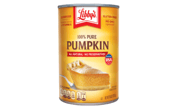
A growing number of doctors are recommending something that might sound strange: stick your bread in the freezer before you toast it. This isn't about keeping it fresh longer or preventing waste. It's about transforming your morning toast into a powerful tool for better health, especially if you're managing diabetes or trying to maintain steady energy levels throughout the day.
The secret lies in what happens to bread's structure when it freezes, creating what scientists call "resistant starch."
This simple change can significantly reduce blood sugar spikes and offer a host of other health benefits that are particularly valuable for older adults.
The Science Behind the Freezer Trick
When bread freezes and then gets toasted, its starch molecules undergo a fascinating transformation.
Dr. Joseph Salhab, a gastroenterologist, explains that freezing changes the bread's starch structure, creating resistant starch that isn't fully digested in the small intestine.
Instead, it passes into the colon where it feeds healthy gut bacteria and produces anti-inflammatory compounds.
With Type 2 diabetes diagnoses predicted to reach 643 million by 2030, this simple dietary hack couldn't come at a better time.
The research backing this technique is impressive: multiple studies show that resistant starch can significantly lower postprandial glucose responses, with some research from the European Journal of Clinical Nutrition finding up to 40% reductions in glucose response when participants ate frozen-then-toasted bread compared to fresh bread.
"The sugars from the bread are absorbed more steadily over the day, and some people even notice it feels gentler on their digestion"
Also read: Ditch the sugar? See which unexpected foods could be harming your teeth
Why This Matters Especially for Seniors
For Americans over 60, this bread technique offers several compelling advantages.
Beyond blood sugar control, resistant starch increases feelings of fullness, helps treat and prevent constipation, can decrease cholesterol levels, and may lower the risk of colon cancer.
These benefits address multiple health concerns that become increasingly important with age.
Perhaps most notably, resistant starch is fermented slowly, so it causes less gas than other fibers—a consideration that makes this approach more comfortable for seniors who may be sensitive to dietary changes.
The digestive benefits are particularly significant.
Because resistant starch isn't digested in the small intestine, it doesn't raise glucose levels while improving gut health by creating more good bacteria and less bad bacteria, which can improve glycemic control.
Also read: Avoid these breakfast mistakes that can secretly spike your blood sugar levels!
The Impressive Research Results
Clinical studies have demonstrated remarkable benefits from resistant starch consumption. In one study, participants who ate resistant starch bagels showed a 22.1% reduction in fasting insulin levels, alongside significant improvements in insulin sensitivity.
Currently, adults in the United States consume only about 4 grams of resistant starch per day, compared to Europeans who get 3-6 grams daily, Chinese populations who consume around 15 grams, and some African countries where people consume 20-30 grams daily.
Americans could clearly benefit from adding more resistant starch to their diets.
Understanding the Types of Resistant Starch
Type 1: Found in whole grains and seeds, protected by plant cell walls
Type 2: Found naturally in unripe bananas and raw potatoes
Type 3: Created when starchy foods are cooked and then cooled (like our frozen bread!)
Type 4: Chemically modified starches found in some processed foods
Type 5: A newer category involving certain cooking processes
How to Implement This Technique Safely
The process couldn't be simpler, but there are some important considerations for seniors to keep in mind.
For the bread hack to work, you need to freeze your bread overnight—this gives the starch molecules enough time to undergo the necessary structural changes.
Here's your step-by-step guide:
- Store fresh bread in the freezer overnight (or longer)
- Toast directly from frozen - no thawing needed
- The bread may take slightly longer to toast than usual
- Enjoy as you normally would
For seniors managing medications or health conditions, it's worth noting that while this technique can help moderate blood sugar responses, it shouldn't replace prescribed diabetes medications or regular monitoring.
Always consult with your healthcare provider about dietary changes, especially if you're managing diabetes or other chronic conditions.
Also read: 20 Kitchen tricks chefs say will change the way you cook
Beyond Blood Sugar: The Bonus Benefits
Research shows that eating resistant starch improves insulin sensitivity and promotes good gut bacteria that produce compounds enhancing metabolic health, with studies indicating that 15-60 grams of resistant starch per day can lower insulin levels after meals and increase insulin sensitivity over time.
The fullness factor is another significant advantage.
Many seniors find that frozen-then-toasted bread keeps them satisfied longer than regular toast, which can help with weight management and reduce the tendency to snack between meals.
For budget-conscious seniors, this technique also reduces food waste.
Bread that might otherwise go stale can be frozen and used as needed, potentially saving money on grocery bills while providing health benefits.
Also read: Supermarket bread labels decoded—how to tell what’s truly fresh
What the Experts Are Saying
California-based chef Auset Shridevi, who has over 20 years of experience, notes that regular starch in bread is essentially a long sugar molecule.
When consumed frequently, it can contribute to diabetes and weight gain. The resistant starch created through freezing behaves more like fiber, offering protection against these issues.
Dr. Tania Elliott, an internal medicine specialist and allergist, emphasizes that this technique helps keep energy levels steady and avoids the big sugar spikes and crashes that can leave you feeling tired and hungry again quickly.
Also read: From rice and fish to fried bread—how breakfast is served around the world
Important Considerations and Limitations
While the research is promising, it's important to maintain realistic expectations.
Freezing bread alone won't replace the benefits of a diet rich in whole grains, fruits, and vegetables.
Some people, especially those who carefully monitor their carbohydrate intake, may notice more steady energy after meals, but this technique works best as part of an overall healthy eating plan.
The technique appears to work best with standard bread types.
While the research doesn't specify optimal bread varieties, the key is ensuring your bread contains sufficient starch to undergo the transformation process.
Did you know?
Did you know? The concept of resistant starch isn't entirely new—it's been studied by food scientists for decades. However, it's only recently gained mainstream attention through social media platforms where health professionals are sharing practical ways to incorporate it into daily life.
Simple Steps to Better Blood Sugar Control
- Freeze bread overnight before toasting for maximum resistant starch formation
- Start with 1-2 slices daily and monitor how you feel
- Combine with other healthy foods for optimal benefits
- Continue regular diabetes management if prescribed by your doctor
- Consider this as one tool in your overall health toolkit
Also read: Could this vitamin play a role in lowering blood sugar?
Making It Work in Your Daily Routine
The beauty of this technique lies in its simplicity.
Unlike complicated meal planning or expensive supplements, freezing bread requires no special equipment, skills, or significant investment.
You can freeze a whole loaf when you buy it, or freeze individual slices in portions that work for your household size.
For couples or individuals who don't eat much bread, freezing individual slices can prevent waste while ensuring you always have the resistant starch version ready for breakfast or snacks.
This approach also works well for seniors who meal prep or like to plan ahead.
You can prepare several days' worth of frozen bread slices, making healthy choices easier during busy mornings or when you're not feeling your best.
Also read: Is your blood sugar advice outdated? Here’s what doctors now recommend for older adults
The Bottom Line for Your Health
While social media trends come and go, this particular technique has solid scientific backing that makes it worth trying.
The combination of better blood sugar control, improved digestive health, increased satiety, and reduced food waste creates multiple reasons to give freezer bread a chance.
Remember that small, sustainable changes often lead to the biggest long-term health improvements.
If you're looking for a simple way to make your daily toast work harder for your health, spending a few seconds placing your bread in the freezer the night before could be one of the easiest health tips you'll ever try!
Read next:
- Unpacking the sugar vs. carbs debate: Expert tips for smarter eating
- Snack smarter: The dietitian-backed bite that balances blood sugar and delivers big flavor
- These 7 deceptive foods are secretly loaded with sugar—protect your health now!
What's your experience with managing blood sugar through dietary changes? Have you tried any simple food modifications that made a surprising difference in how you feel?
Share your thoughts and experiences in the comments below—your insights might help fellow readers discover their own path to better health.
Primary Source
https://www.the-independent.com/life-style/frozen-bread-gut-health-toast-tiktok-b2844520.html
A comparison of the effects of resistant starch types on glycemic response in individuals with type 2 diabetes or prediabetes: A systematic review and meta-analysis - PMC
Cited text: Type 2 diabetes (T2D) diagnoses are predicted to reach 643 million by 2030, increasing incidences of cardiovascular disease and other comorbidities.
Excerpt: With Type 2 diabetes diagnoses predicted to reach 643 million by 2030
https://pmc.ncbi.nlm.nih.gov/articles/PMC10085630/
Frontiers | A comparison of the effects of resistant starch types on glycemic response in individuals with type 2 diabetes or prediabetes: A systematic review and meta-analysis
Cited text: Background: Type 2 diabetes (T2D) prevalence could reach 643 million by 2030, increasing incidences of cardiovascular disease and other comorbidities....
Excerpt: With Type 2 diabetes diagnoses predicted to reach 643 million by 2030
https://www.frontiersin.org/journals/nutrition/articles/10.3389/fnut.2023.1118229/full
A comparison of the effects of resistant starch types on glycemic response in individuals with type 2 diabetes or prediabetes: A systematic review and meta-analysis - PMC
Cited text: In a meta-analysis of seven studies (n = 168) (56–62), resistant starch lowered postprandial glucose [–0.31 (–0.50, –0.13)]. Subgroup analysis indicat...
Excerpt: resistant starch can significantly lower postprandial glucose responses
https://pmc.ncbi.nlm.nih.gov/articles/PMC10085630/
What is Resistant Starch? - The Johns Hopkins Patient Guide to Diabetes
Cited text: Other benefits of resistant starch include increased feeling of fullness, treatment and prevention of constipation, decrease in cholesterol, and lower...
Excerpt: Beyond blood sugar control, resistant starch increases feelings of fullness, helps treat and prevent constipation, can decrease cholesterol levels, and may lower the risk of colon cancer
https://hopkinsdiabetesinfo.org/what-is-resistant-starch/
What is Resistant Starch? - The Johns Hopkins Patient Guide to Diabetes
Cited text: Resistant starch is fermented slowly so it causes less gas than other fibers.
Excerpt: resistant starch is fermented slowly, so it causes less gas than other fibers
https://hopkinsdiabetesinfo.org/what-is-resistant-starch/
What is Resistant Starch? - The Johns Hopkins Patient Guide to Diabetes
Cited text: Because resistant starch is not digested in the small intestine, it doesn’t raise glucose. Gut health is improved as fermentation in the large intesti...
Excerpt: Because resistant starch isn't digested in the small intestine, it doesn't raise glucose levels while improving gut health by creating more good bacteria and less bad bacteria, which can improve glycemic control
https://hopkinsdiabetesinfo.org/what-is-resistant-starch/
Resistant Starch Bagels Reduce Fasting and Postprandial Insulin in Adults at Risk of Type 2 Diabetes - PubMed
Cited text: Results: The RS bagel treatment resulted in significantly lower fasting (22.1%, P = 0.04), 2-h (23.3%, P < 0.008), and 3-h (18.9%, P = 0.05) insulin i...
Excerpt: In one study, participants who ate resistant starch bagels showed a 22.1% reduction in fasting insulin levels
https://pubmed.ncbi.nlm.nih.gov/27733521/
What is resistant starch and how does it impact glucose? | Levels | Levels
Cited text: According to a study published in August 2020 in The Journal of Nutrition, adults in the United States consume about 4 grams of resistant starch per d...
Excerpt: Currently, adults in the United States consume only about 4 grams of resistant starch per day, compared to Europeans who get 3-6 grams daily, Chinese populations who consume around 15 grams, and some African countries where people consume…
https://www.levels.com/blog/what-is-resistant-starch-and-how-does-it-impact-glucose
What is resistant starch and how does it impact glucose? | Levels | Levels
Cited text: Eating resistant starch improves insulin sensitivity and promotes good gut bacteria that produce compounds that enhance metabolic health. Research sho...
Excerpt: Research shows that eating resistant starch improves insulin sensitivity and promotes good gut bacteria that produce compounds enhancing metabolic health, with studies indicating that 15-60 grams of resistant starch per day can lower…
https://www.levels.com/blog/what-is-resistant-starch-and-how-does-it-impact-glucose






